Follow the link for pictures at Singapore's Sungei Buloh wetlands:
http://picasaweb.google.com/rachelknutson.knutson8/WetlandAdventures#
It seems no matter what you do to prevent it, school picture day just somehow goes horribly wrong. No amount of Clean and Clear, no preventative face mask applied religiously for a whole week before, not even the homemade toothpaste, zit zapper concoction that your grandma promises “works every time” will prevent the red bump from rearing it’s ugly head smack dab in the middle of your forehead on the morning of the dreaded photos. Nor will you ever be granted the gift of a good hair day on that one particular morning even if you’ve enjoyed twelve consecutive days of perfectly messy, beachy waves for the entire previous week and a half running. Don’t even bother wishing for a Cameron Diaz-esque glowing tan that day as your summer color will have already faded, your bronzer will inevitably run out, and you will put so much blush on to overcompensate that you’ll end up looking more like Bozo the Clown than Ms. Diaz. You will have a bad hair day and a muddled complexion, and you will never pick out that perfectly complimentary color for your skin tone. I’m not being negative. I’m being honest. It is a fact of life.
Luckily, for many of us, after twelve years we graduate from high school and leave school picture days behind for the less fortunate youngsters to tolerate until their time comes. We bury the evidence in dusty school yearbooks tucked safely behind the Reader’s Digest collection and family photo albums. And, except for the occasional rediscovery of an old, stray school photo that escaped the attempt to cover the trail tucked deep down in Dad’s wallet, we never look back. That is, until you move to Singapore to become a secondary school teacher for 16 months.
Then you wake up with a fuzz ball of matted, slept on hair that refuses to do anything but cling to your face on one side and stick out in every direction but down on the other. At 23-years-old you have been fooled into thinking you have outgrown your hormonal adolescent days only to be greeted, when you take that first glance in the mirror, by a zit that vaguely resembles Mount Vesuvius on your chin. You have almost scrapped out the last of your bronzing powder in a country that markets all face products as “whitening” and nothing you own seems to look right. Yep, must be school picture day.
Despite the disastrous morning, I did somehow manage to survive the day, but came out with, no doubt, another one of those “flattering” school photos which will, upon claim, be tucked into the deepest, darkest corner of a shoe box and hidden safely under the guest room’s bed only to be found and hurriedly hidden away again once a year during spring cleaning.
One of the many “privileges” I have been enjoying as a secondary school teacher has been the re-living of many of these once-in-a-lifetime-experiences…twice. I have, for example, taken part in a graduation ceremony, accompanied students on several school field trips, helped ‘first years’ who are unexplainably lost and wandering around the school to find their way to their classrooms, and, of course, had the joy of experiencing yet another school picture day. Not all of these experiences, of course, are comparable to school picture day in that most were much more enjoyable. For example, just last Monday I accompanied the Secondary One students to the Commonwealth School Band Concert, where I was reminded of my days as a trombonist in the Riggs High School band, particularly during the “Pirates of the Caribbean” movie re-mix.
I have been fortunate to be spending quite a lot of time at Singapore’s premiere performing arts venue, the Esplanade, in that in course of the last couple weeks, in addition to the school band concert, I’ve been able to attend “Men in Tutus,” an all male comedy ballet by the internationally acclaimed company Les Ballet Grandiva of Japan, and “La Boheme,” my second ever opera performance.
The highlight of the last week and a half in school has been the adventure out of school to spend three days and two nights “camping” with my Secondary Two students at Jurong Bird Park. “Camping” (with particular emphasis on air quotes if you could see me right now) is a bit different in Singapore than my South Dakota roots had me anticipating. Cooking over an open flame was replaced by catered meals four times a day, campfire songs were replaced by a full on sound system and DJ, and, while the students did sleep in tents, for the teachers the hard ground and sleeping bags were instead cots in an air conditioned room overlooking the flamingo pond.
On a slight tangent, in addition to many cultural and other learning experiences to which I was exposed at the school level camp, one was that flamingos do not necessarily follow the same sleeping patterns as we humans do, and they tend to find it rather funny spend most of the night wandering around squawking for no particular reason and occasionally flapping their wings all in unison to create a great roar similar to the sound of a cattle stampede. While beautiful, this is not particularly amusing at three in the morning. The phrase “I need caffeine” had never truly been as literal as it was at level camp.
Other even more valuable level camp learning experiences to note:
1.) The head garment that Muslim women wear is called a Hijab. While it is appropriate to relax the dress code at home with their husbands and families, it is often considered indecent to remove the Hijab in the presence of men other than their husbands. To overcome this obstacle, we set up a tent inside the air conditioned, flamingo fish bowl of a room for my Muslim co-workers. In addition, food that is catered in Singapore is almost always naturally Halal, or fit to eat according to Muslim religious practice (this is something I’m not qualified to explain but it has to do with the way meat is slaughtered or the way things are cooked), as is much of the food served in public places like the bird park. The cultural awareness and therefore sensitivity of most Singaporeans and of the city as a whole is a quality that never ceases to amaze me and is one I find truly admirable.
2.) There is this thing in Singapore fondly referred to as the “No U-Turn Syndrome.” In most countries there are signs that inform you when it is illegal to u-turn. Every other place it is up to the driver's judgment, and drivers often take advantage of this fact and, in fact, do u-turn. However in Singapore, there are signs telling you when you are allowed to u-turn, because otherwise no one would. (At PiA orientation they told us that, even though it has one of the lowest crime-rates per capita of any city in the world, we would rarely see police in Singapore, because every Singaporean has his/her own police car patrolling around in his/her heart. So true.)
I’ve certainly seen signs of this u-turn phenomenon in my classroom as well. For example, I recently assigned my students the task of writing a descriptive paragraph about their favorite room in their house. They were to use at least one simile or metaphor and three of the five senses to practice “showing” not “telling” about a place. From what I can remember about being a student myself, I believe American students might be confused about similes and metaphors (if they had not already discussed the meaning), but they would probably not otherwise have trouble with the assignment. My kids, on the other hand, looked at me like they had never heard of a house let alone a paragraph before.
It was only after I modeled an exact example of what I was looking for from them by describing my favorite room in my own house in Pierre that they were willing to even attempt the assignment.
The moral of all this: The students are not all that willing to take the initiative to do tasks on their own until they are absolutely certain of what is expected…and then it is no longer initiative by definition is it? And this all comes back to the Asian ideal of “saving face” by avoiding standing out from the crowd in order to avoid embarrassment. (As a side note and sort of a disclaimer to all this, I am not saying that American students are better than Singaporean students by any means. In fact, in a lot of ways I’m sure they are worse. I truly adore my students and think that they are all very intelligent and talented (even the ones who give me the finger). I am simply giving an example of how they are different.)
Back in the Bird Park. The second day, my students were given the task of planning an all-day trek to various checkpoints around Singapore. They were given points for every checkpoint they reached, and the further from the center of the city the checkpoints were, the more points they received. The teachers and facilitators were instructed to simply accompany the students and only step in if there was a safety issue. Otherwise, the students were to totally take the initiative on this one. Can you say “disaster waiting to happen.”
If the shortest distance between two points is a straight line, my students took the square, spiral and zigzag routes. Let’s just say, we walked a “few” more miles than were absolutely necessary that day and leave it at that…but it was a learning experience for all none-the-less.
3.) I think aliens have abducted my slightly out of control classes and dropped lovely little students in their place. Or maybe it is just the fact that I spent three days with them eating, walking around the flamingo pond five times until someone took the initiative to look at a map to find the penguin exhibit, laughing and sharing personal stories, comforting three upset boys who were sent home when they caught the pink-eye epidemic that was running rampant by the last day of camp, seeing leaders emerge in the least likely candidates, watching them make fools of themselves dancing to Lady Gaga around the campfire (though I did discretely join in occasionally), and just generally sharing their triumphs, frustrations, fears, and joys.
I guess no matter what your differences in age, language, upbringing, culture, religion, you can always find some small way to relate to any person. As an added benefit, it definitely helps in the classroom when I can tell the loud boy in the back corner that I saw him lead his group in the tent pitching activity, and I know he can lead in the same way in the classroom by delegating activities to his group members and helping to solve problems that arise when people with clashing personalities must work together. Not only did my first ever level camp lend me new found knowledge about birds, flamingos especially, but also it was a valuable learning experience in matters of culture and teaching as well.
With all of this bird park fun and the Esplanade trips in addition to working in general, my free time has been somewhat limited. Yet, I did find time to join my PiA friends for a late Sunday brunch complete with whole-wheat-strawberry-mango crepes, a Dutch baby (sort of a combo of omelet/puff pastry), Christmas eggs (with red and green peppers), Chinese tea, and fresh fruit.
This past weekend Stephanie and I joined my Chinese co-workers for a Chinese New Year shopping spree at the food warehouses in the northwest of the island. Think the day after Thanksgiving-esque sales, but for food. The Chinese New Year goodies included traditional cookies, pastries, and snacks, dumplings, sea food, sauces, love letters (which oddly look and taste very much like the Norwegian treat, krumkaga), and the infamous bak kwa, a flat, dense pork product. Sampling was included.
On Saturday night, I attended a BBQ fundraiser for Haiti that was organized by our friends, Jacob and Hannah. We enjoyed traditional Haitian music and food like grilled plantains, rice and beans, pickled vegetables, and sweet potato pudding all pool side. It was a lovely evening, not to mention, we raised an impressive S$2,045 (S$1,694 for Partners in Health Haiti and S$351 for the International Red Cross Haiti Appeal). Our efforts were equivalent to 3% of Singapore's total donation to Haiti. (On a slightly critical note, as of Thursday this week, Singapore, a country with one of the strongest economies in the world, had donated less than Chad and Cambodia, both with some of the poorest economies.)
Stephanie and I spent Sunday at the Sungei Buloh wetlands where, after watching the sea otters wake up, we had a free tour with an over 70, incredibly sharp, and physically able British man, who has called Singapore home for over 20 years. On the tour we learned things like which leaves will leave you blind if you get their sap in your eyes, which tree’s bark is used by fishermen for string, which plant will help you start a fire if your wood gets wet, what makes the large dirt piles along the edges of mangroves (if you’re wondering, it is mud lobsters who eat and then expel all the mud that creates the giant mounds), and, of course, which flower, when ground, will kill all the fish and other life forms in an entire pond. Keith, our tour guide, was as full of information as and far more entertaining than any biology book could ever have been.
Also as another side note, sorry these side notes are getting a bit out of hand for this particular entry, but we had a photographer, who is incidentally writing a book about the wetlands, follow us on our tour to get some shots of visitors to the wetlands. Not only did we have a walking botany book for a guide, but also we had our own personal photographer who took pictures of us to be published in his book this coming June. This is my life in Asia…seriously.
Now, I’m already psyching myself out for a Vishnu flow yoga class followed by tons of relaxation on Friday night. Saturday will bring an English course on how to use video and media in the classroom in the morning followed by a trip to the National Museum of Singapore and possibly a traditional Chinese New Year lunch.
A Happy Birthday shout-out to my mom and dad.
Cheers and TIA,
Rachel
Thursday, February 4, 2010
Subscribe to:
Post Comments (Atom)






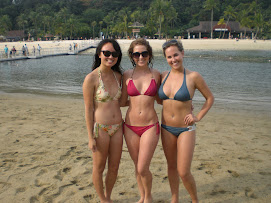
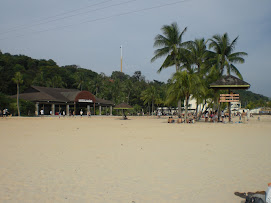


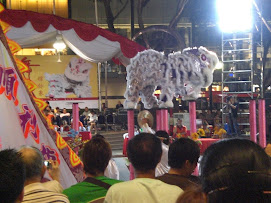




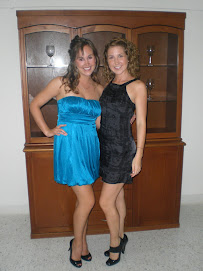






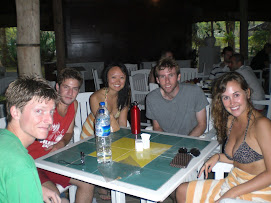

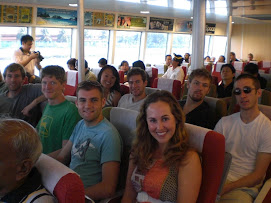

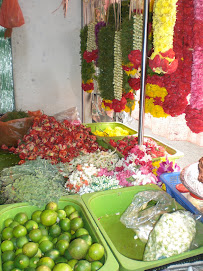


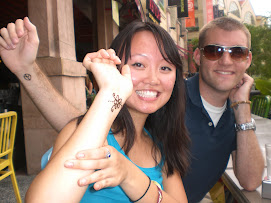

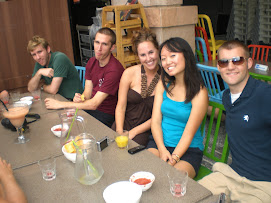

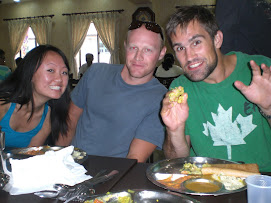


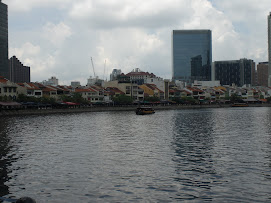



No comments:
Post a Comment